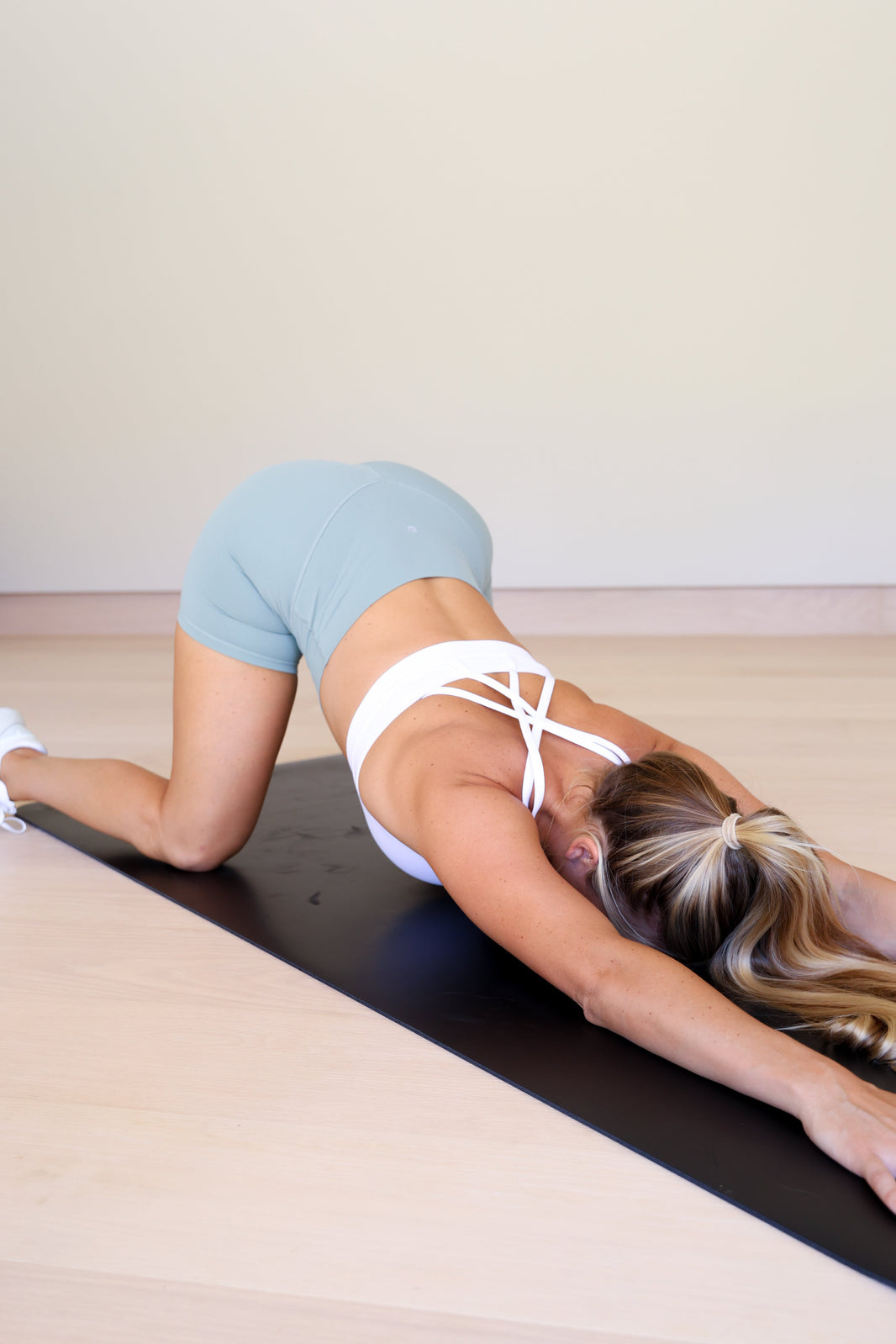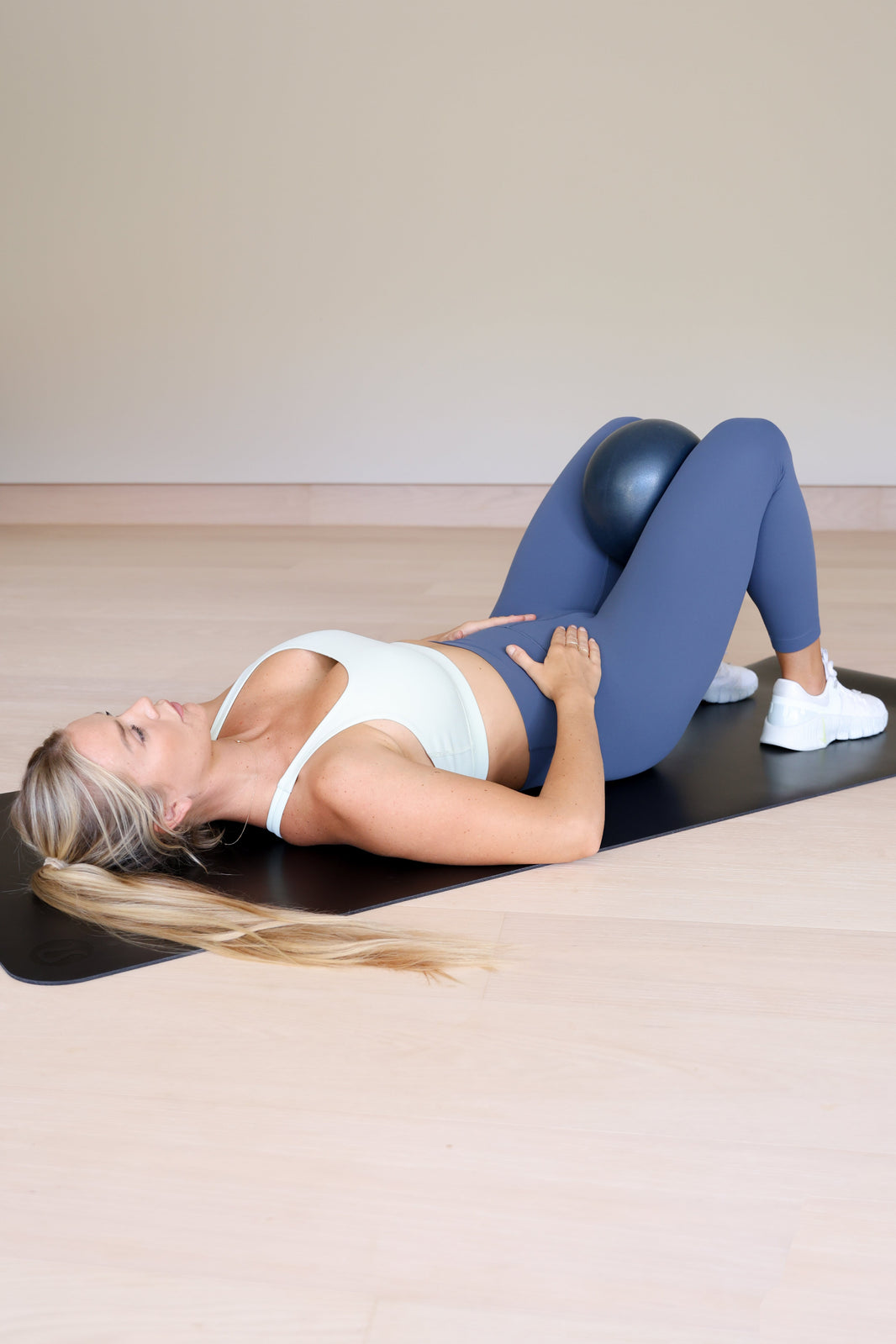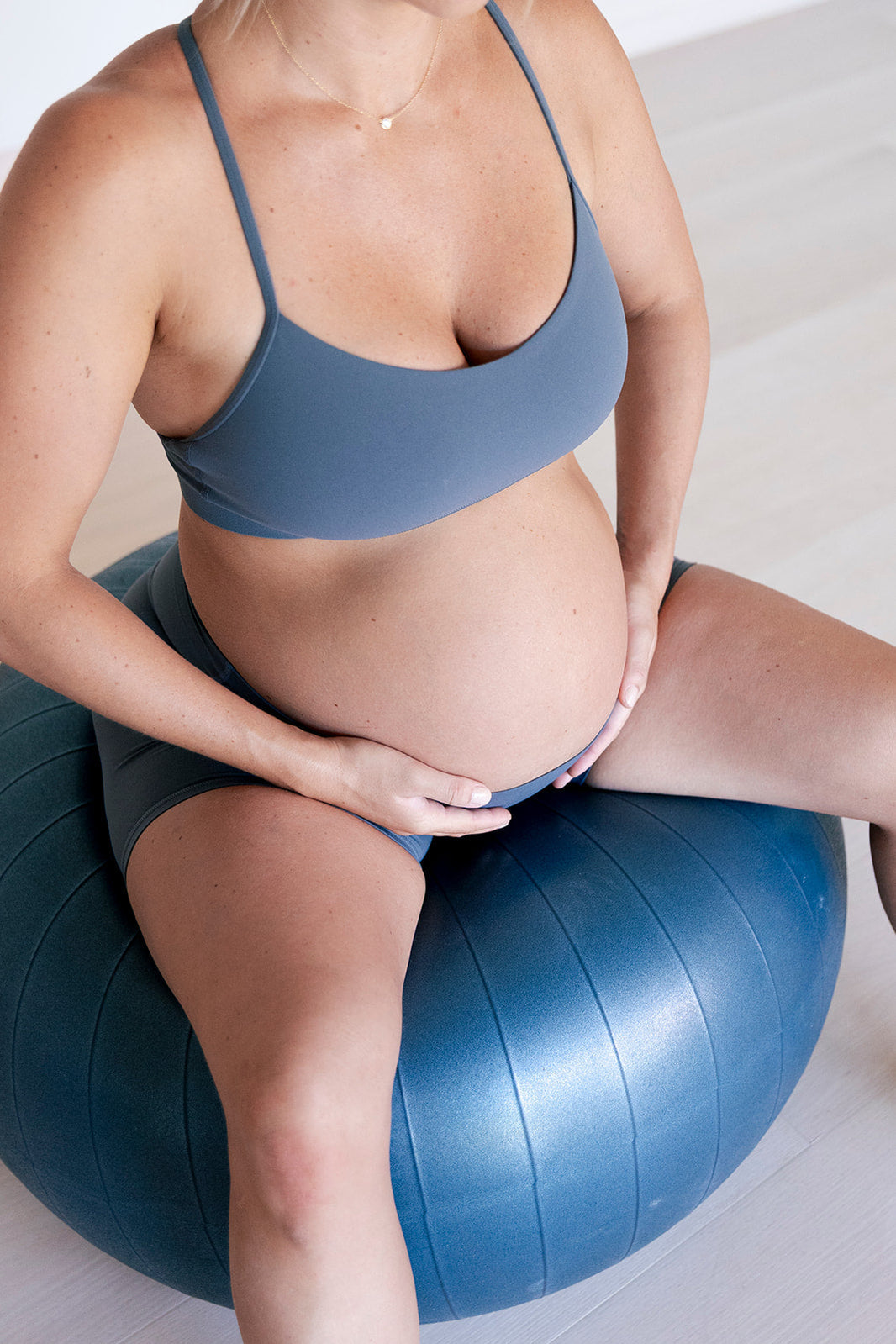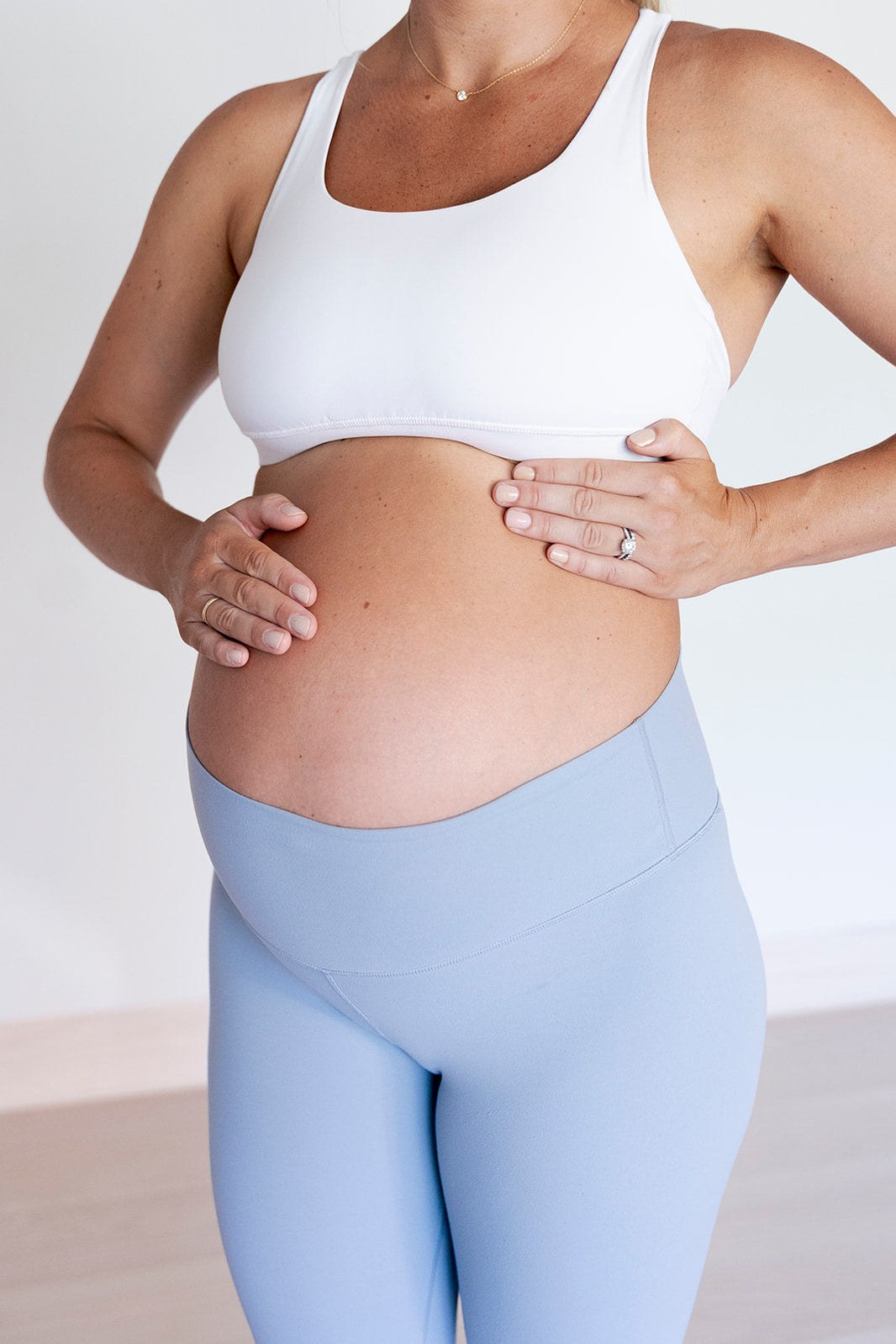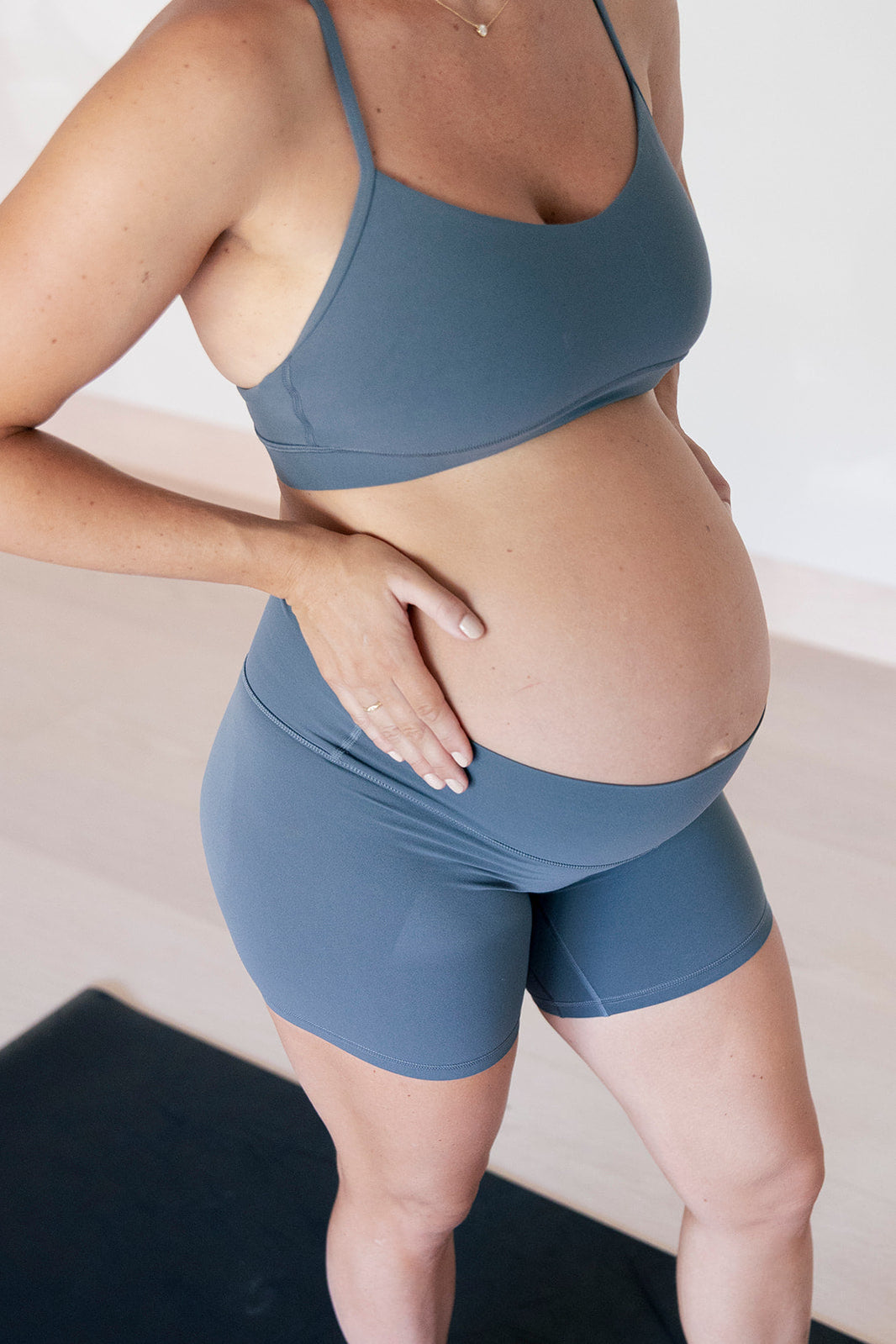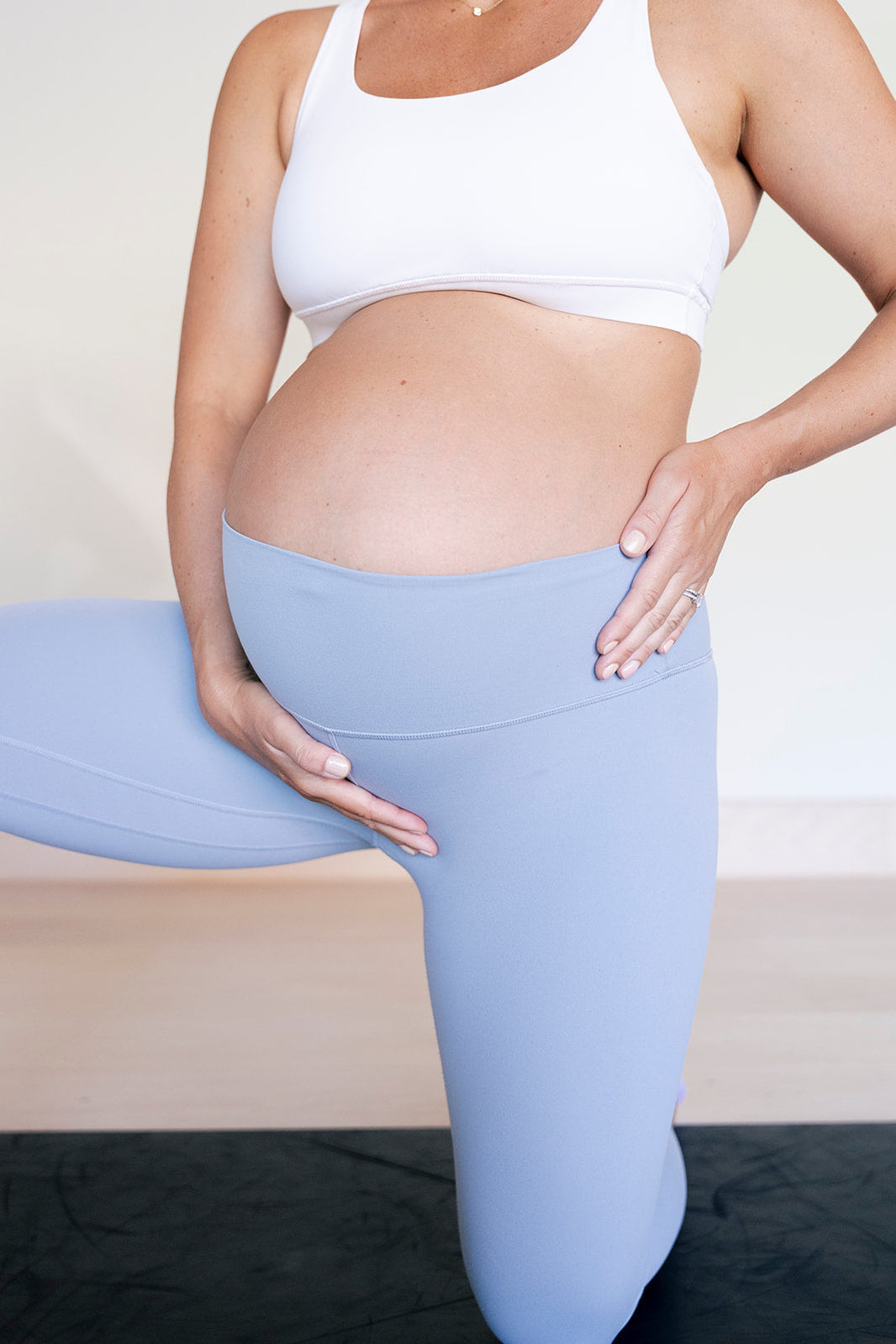Pregnancy brings a host of physical changes as your body adjusts to support a growing baby. For many mommas, pelvic girdle pain (PGP) becomes a common and frustrating symptom. Pelvic girdle pain refers to discomfort in the pelvic region caused by increased joint mobility, hormonal changes, and the physical strain of pregnancy.
Let’s explore the various types of pelvic girdle pain, discuss how movement and proper posture can provide relief, and discuss how external supports, such as belts and braces, can help manage symptoms. By combining these strategies, you can find greater comfort and support during your pregnancy journey.
Types of Pelvic Girdle Pain During Pregnancy
Pelvic girdle pain can present in different ways, depending on which structures in the pelvic region are affected. Common types include:
• Pubic symphysis pain: Pain in the front of the pelvis, where the left and right pelvic bones meet.
• SI joint pain: Discomfort near the sacroiliac (SI) joints, located at the back of the pelvis where the spine meets the hips.
• Round ligament pain: A sharp or pulling pain along the sides of the belly as the uterine ligaments stretch to support your growing baby.
• Tailbone pain: Discomfort at the base of the spine, often aggravated by sitting or certain movements.
• Vulvar varicoceles: Swelling and discomfort in the vulva caused by enlarged veins in the pelvic region.
• Prolapse-related pain: Vaginal or rectal pressure caused by weakened pelvic floor muscles that can no longer support pelvic organs properly.
Although PGP can be painful, relief is possible with movement, posture adjustments, pelvic floor physical therapy, and external supports tailored to your specific needs.
External Supports for Pelvic Girdle Pain
External supports can provide stability, compression, and relief for different types of pelvic girdle pain. Let’s explore some common supports and their benefits:
1. SI Joint Belts

• Purpose: SI joint belts help compress the pelvis for stability, relieving pubic bone pain, SI joint pain, and low back discomfort. They work by pulling the pelvic bones inward to provide support and reduce joint irritation.
• Recommended Product: Maternity SI-LOC Support Belt
• How It Helps: Provides midline compression for pubic symphysis support and creates slight opening at the SI joints for pain relief.
2. Belly Bands

• Purpose: Belly bands provide upward support for the growing belly, reducing strain on the round ligaments and easing pressure on the lower back.
• Recommended Product: Momcozy Belly Band
• How It Helps: Reduces weight-bearing pressure on the pelvis and supports the uterine ligaments.
3. Combination Supports

• Purpose: Some supports combine the benefits of SI joint belts and belly bands, offering compression for the pelvis and lifting for the belly.
• Recommended Product: Dr. Shape Maternity Belly Band
• How It Helps: Offers comprehensive stability and relief for pubic symphysis, SI joint pain, and round ligament discomfort.
4. V2 Supporter or Pelvic Bra

• Purpose: Designed for vulvar varicoceles and prolapse symptoms, these supports provide upward compression to improve blood flow and reduce pressure on the pelvic floor.
• Recommended Products: V2 Supporter or Classic Pelvic Bra• How It Helps: Alleviates swelling and discomfort from vulvar veins and lifts prolapsed pelvic organs for improved comfort.
5. Seated Cut-Out Pads

• Purpose: Tailbone cushions reduce pressure on the coccyx, relieving tailbone pain during sitting.
• Recommended Product: Coccyx Cushion for Tailbone Pain
• How It Helps: Prevents compression of the tailbone, reducing irritation and pain.
Posture and Pelvic Alignment During Pregnancy
Your posture naturally changes during pregnancy as your body compensates for the weight of your growing belly. Common postural shifts include:
• Increased lumbar lordosis (curvature of the lower back).
• Outward rotation of the hips.
• Limited hip and lumbopelvic stability and increased pelvic motion during walking.
• Rib cage flaring and reduced upper back mobility.
These changes can place extra strain on the pelvis, contributing to pelvic girdle pain. Working on proper alignment can help reduce this strain and support your pelvic floor and core.
What Is Proper Alignment?
From the side view, your earlobe, shoulder, hip joint, knee, and ankle should align. From the front, your sternum and pubic bone should line up. This posture promotes balanced strength and minimizes unnecessary strain.
Postural Strengthening Exercises
1. Standing Alignment with Breathing: Stand tall in proper alignment and practice diaphragmatic breathing to maintain awareness.
2. Bird Dog: On all fours, extend one arm and the opposite leg while maintaining pelvic alignment.
3. Weighted Farmer Carries: Hold weights in both hands and march in place, focusing on maintaining alignment.
Movement Patterns to Relieve Pelvic Girdle Pain
In addition to posture, promoting movement in areas that become stiff during pregnancy can reduce compensations that worsen pelvic girdle pain.
Mobility Exercises
1. Side lying Open Books: Improve upper back and rib cage mobility.
2. Half-Kneel Upper Body Rotation: Open the chest and promote thoracic rotation.
3. Hip 90/90s: Increase hip mobility and flexibility.
4. Cat Cows with Hip Internal Rotation: Release tension in the spine and pelvis.
Stability and Strength Exercises for PGP:
Pregnancy also reduces core and pelvic floor stability, making it essential to strengthen the lumbopelvic region. Try out these exercises to promote more lower body stability and control:
1. Bridges with 5-Second Holds: Activate glutes and pelvic floor muscles.
2. Seated Birth Ball Marches: Improve lumbopelvic stability while mimicking functional movements.
Pelvic girdle pain doesn’t have to overshadow your pregnancy journey. With the right combination of external supports, posture work, and movement-based exercises, you can find relief and support for your body.
Whether using an SI joint belt, belly band, or pelvic bra, pairing these supports with proper alignment and strength training will help you navigate pregnancy more comfortably. Remember, you don’t have to face PGP alone.
By focusing on alignment, movement, and support, you’re setting yourself up for a more empowered pregnancy and beyond.



